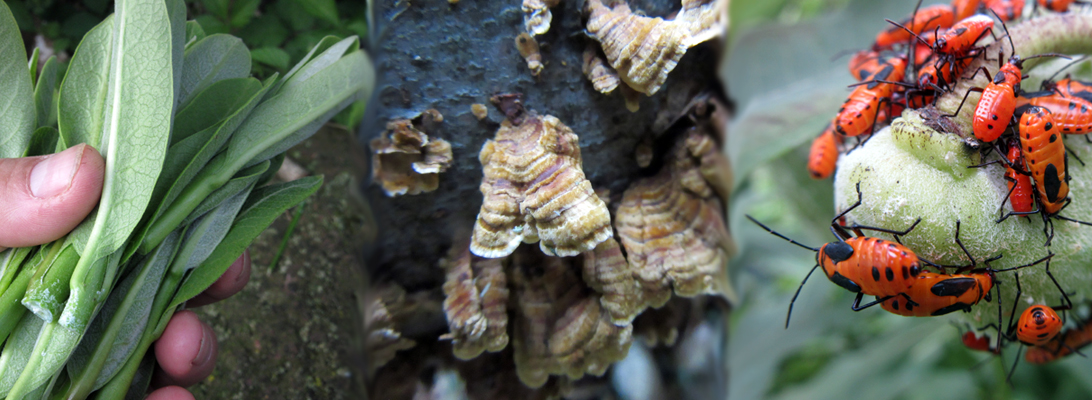While I’m not usually big on just posting videos, this is well produced and hits the nail on the head.
This is from The People Who Feed Us.
Joel Salatin runs Polyface Farms.
Thanks,
Nate

While I’m not usually big on just posting videos, this is well produced and hits the nail on the head.
This is from The People Who Feed Us.
Joel Salatin runs Polyface Farms.
Thanks,
Nate
Berry season is in full swing. So far this week, my family and I have gathered red mulberries (Morus rubra), white mulberries (Morus alba), red raspberries (Rubus strigosus), black raspberries (Rubus occidentalis), serviceberries (Amelanchier species), wild strawberries (Fragaria virginiana) and woodland strawberries (Fragaria vesca).
We almost missed out on the woodland strawberries, there was something a little different about them.

While we have been picking from a bunch of patches of regular wild strawberries for several weeks now, I have been keeping track of a small but dense patch of woodland strawberries. They grew steadily, but never turned red.
I started to really wonder what was going on when recently they seemed to be disappearing. Was someone or something eating them unripe? Today I decided to see if they felt ripe, and they did.
Both Samuel Thayer and Euell Gibbons have great chapters on the different species of wild strawberries in their respective books, but I didn’t see anything on white strawberries. I usually don’t really use the internet to identify edible plants, but a quick search showed that there are several different white cultivars of woodland wild strawberries.
Given that the plants perfectly matched the description of Fragaria vesca in Nature’s Garden, that I had seen the plants in flower, and that multiple websites described white varieties, I headed back over to the small patch and sampled not only my first woodland strawberries, but my first white strawberries. Like I had read, they were pretty good, not quite as flavorful as wild strawberries, but well worth the walk.
Thanks for taking the time to read, don’t forget to take the time to get out and have your own adventures.
Nate
Wilson Alvarez (of Homegrown Edible Landscaping) and I will be leading a workshop on wild foods and plant identification on June 25th. It will start at noon at Eastern Market. The address is 308 East King Street, Lancaster.
I will lead off with a brief discussion and demonstration on how to process black walnuts with simple hand tools, and how to make a few of those tools for free or cheap. Then Wilson will lead a wild edible plant identification walk.
If you are in the area and have any interest in wild food this is a great opportunity to learn. Wilson taught me a few of my first edible wild plants, really knows his stuff, and lives what he teaches.
Hope to see you there,
Nate
It has been a while since I last posted anything. I kind of ran into a mental block, but mostly with it staying light later in the evenings, most of the time I had been writing has been spent outside. I guess that is a good thing.

Anyway since I last posted the season for black locust flowers has come and gone. For about a week I could just wander around the edge of the woods and stuff my face with wonderful tasting clusters of flowers. At the very peak of the season I picked a very large salad bowl full in well under fifteen minutes. I would long for next year’s harvest, but there are too many other wonderful treats around to even bother. Maybe over the winter.

Like black locust, I learned most of what I know about burdock from Samuel Thayer’s book The Forager’s Harvest. His DVD, also called The Forager’s Harvest, shows proper techniques for efficiently collecting both plants as well.

Last week I gathered seven or eight burdock stalks. We peeled, chopped, rinsed, and sauteed them with onions. Honestly peeling them was fairly labor intensive, but well worth it for a mostly free dish. I plan on collecting a lot this weekend, since they are very abundant and right at the height of their availability.

Wild strawberries. What can I say about wild strawberries?

Wild strawberries are second only to morels in terms of wild foods that seem to me to have been placed here solely for the purpose of reminding us how amazingly wonderful life on this planet can be. I can hardly wrap my head around the fact that people would mow a patch of them right as they were starting to ripen. Fortunately the patch in question must be used to such treatment because it seems to have a very large proportion of its fruit hugging the ground. These were the first berries to ripen last week. The picture above was taken hours before the mowing. Right now the really lush patches at the edge of the woods are ripe, and they have much nicer fruit that averages somewhat larger too.
I have picked strawberries almost every day for the last week, but have eaten remarkably few. Why? Because I have a two and a half year old son who is a wild fruit fiend. His ability to devour berries is almost limitless.

There are several varieties of wild strawberries around the country. The strawberries I have been picking a common wild strawberries (Fragraria virginiana). They taste like someone condensed all of the flavor from the best large commercial strawberry into a tiny little package. I also know of one decent patch of woodland wild strawberries (Fragraria vesca) that should be ripening soon. They apparently aren’t as flavorful, but still quite good.
For more information about wild strawberries check out Euell Gibbons’ Stalking the Wild Asparagus, and Samuel Thayer’s Nature’s Garden.
Thanks for reading, get out and discover what is just waiting to be picked.
Nate